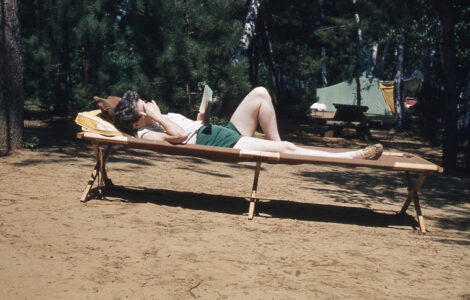Caring for Valentine’s Day cut flowers

Cornell University Hortus Forum club members learn about the University’s Flower Bulb Research Program. (Provided photo — CALS School of Integrative Plant Science, Horticulture Section)
February is generally the coldest month of the year, the heart of winter, a time that finds many of us patiently waiting, if not longing, for spring. Perhaps that’s why the preferred gift for a cold, wintry Valentine’s Day is a fresh bouquet of colorful, fragrant cut flowers. Valentine’s Day is when, more than at any other time of the year, people declare their undying love, often with cut flowers. What could possibly be more heartwarming?
According to the Society of American Florists, more than 80% of the cut flowers given are roses. Most of them are red. Red symbolizes warmth and feeling and is associated with the human heart. A red heart with an arrow piercing through it is a symbol of both love and vulnerability, and one of the most common images associated with Valentine’s Day.
Valentine’s Day is an extremely important holiday for North American florists and floral purchases, and is arguably the single-most important holiday for the global flower industry as well. In 2019, 28% of American adults (37% of men, 19% of women) purchased flowers or plants as Valentine’s Day gifts. Retail sales totaled $1.9 billion. Men made the majority of purchases.
An often asked question is, “How can I extend the vase life of cut flowers?” The answer is, “by following a few very simple steps.”
First, select only the best quality flowers, taking into account that flowers that are still in bud will have a longer vase life than flowers that are already in full bloom. Look for buds that are just beginning to open and stems that present upright, firm petals. Avoid yellow, spotted or drooping leaves.
Make sure your flowers are kept safe from damage when you transport them or when they are delivered. Keep in mind that tender flowers and buds will not tolerate cold for any length of time and can be seriously injured by freezing temperatures.
When you get them home, thoroughly clean the vase that you are going to use with hot, soapy water or a weak bleach solution.
Before placing the flowers in the vase you’ve selected, cut off a portion of each stem while holding the stem in or under warm water. Use a sharp scissors, knife or razor blade, and cut at a 45-degree angle, being careful not to crush or tear the stem. The 45-degree angle exposes more surface area than a straight cut, thereby allowing greater water absorption. It also keeps the stem from resting flat, on the bottom of the vase.
Next, gently remove the lower leaves from the stems so none of the foliage will be in the vase water. Doing so will inhibit bacterial and fungal growth. Once these steps have been taken, you’ll be ready to arrange your flowers in the vase.
Florists use a process called “hardening” when doing this. Hardening is just placing the cut blossoms in hot water (100 to 110 degrees Fahrenheit), to which cut flower food and a preservative have been added, and then placing the arrangement in a cool location until the water becomes room temperature. Using mildly hot water promotes maximum water uptake, which forces the maximum amount of food and preservative into the stems, leaves and flowers.
Packets of flower food are often included with cut flower purchases. But if your cut flower bouquet does not contain one, you can make your own food and preservative solution by adding two or three drops of bleach, one quarter-teaspoon of vinegar, and one or two teaspoons of sugar to a quart of water. Other substitute solutions include using a small amount of mouthwash, or a bit of hydrogen peroxide and a splash of 7-Up or Sprite.
Once the flowers are safely in the vase, they should be kept away from extreme heat or cold. This includes direct sunlight, drafts and hot air from heat sources. They should be kept away from ripening fruit and vegetables as well. And dead flowers should be quickly removed.
You can maximize the freshness of well-cared-for cut flowers by allowing them to spend their nights in the coolest room in your home and by changing, or at least topping off, their water daily.
–
Who was St. Valentine?
–
Legend says that Roman Emperor Claudius II, believing that married men wouldn’t leave their wives and families to enlist in the army, banned all young men from marrying. A priest named Valentinus defied him by performing secret marriages and, for doing so, was sentenced to death. He was executed on Feb. 14, 270.
Some say that while in jail, admirers sent Valentinus letters of support — the first valentines. Others say he was befriended by the daughter of one of the jailers and that he miraculously restored eyesight to the blind daughter of his judge. Before being martyred, he wrote to both women, signing his letters, “from your Valentine.” Valentinus is considered the patron saint of lovers.
Happy Valentine’s Day.


